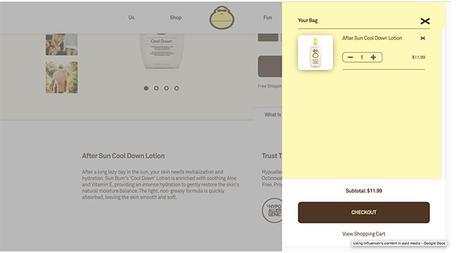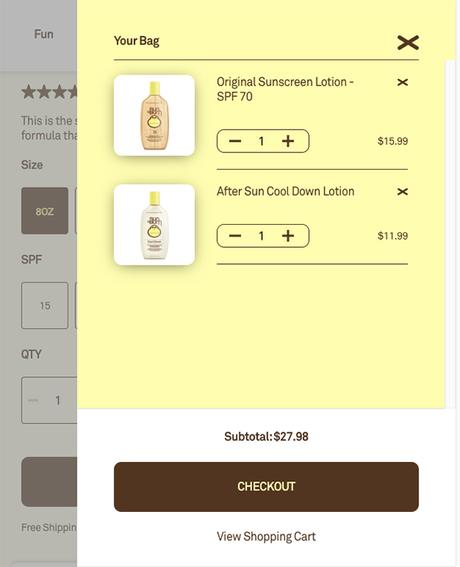When you look at the money you spent advertising your products and compare that to the money you made from them, how happy are you?
Are you pleased with your profit margins after you've accounted for the costs of running your business?
When it comes to generating tonnes of revenue for your business, you have a number of options. You can choose to sell more products, or you can try to make more money on the products you already sell. This concept is known as profit maximization.
In this post, we'll look through different ways you can maximize your profits without harming your business.
You'll learn:
- Why you don't need to add endless discounts to generate more money
- Why you need to consider traffic tactics to boost the number of people who visit your store
- The lesser-known reason why your pricing strategy might be harming your profit margin
- How to get your store set up for conversions to increase profit.
Ready, let's go.
Use value-based pricing to increase your profit margins
For many people, when it comes to planning strategies to increase their profit margins, they think about discounting specific items. The argument is, the cheaper the products, the more someone will be happy to pay for what you're selling.
In actual fact, though, this isn't the best approach if your ultimate aim is to increase and maximize your profits.
Think about it.

This indoor house plant would cost £240.00. If it costs Patch £50 to source this product, their base profit is £190.
If they decreased the price of this houseplant to £190, their profit falls then to £140. They have to sell more products to reach the same profit margin.
Instead, a better approach is to keep your prices the same (or increase them) and use your marketing activities to highlight the of the products you're trying to sell.
Profit maximization is all about making the most out of the assets you have. If you know you can sell your product for £200, don't try to reduce it to £150 to try and sell more, get better at selling more at the price you know works for you and your business.
Before you begin thinking about implementing value-based pricing, you need to conduct some research. Value-based pricing is all about how the customer perceives the value of your products.
If you needed some new gloves in winter, you'd be happy to pay a premium if they were marketed as "extra warm - cold and wind resistant". Because the value of being warm at winter outweighs any discount you might be looking for.
Once you know what value your products offer, you'll be able to come up with a price point that supports that. From there you can work backward and ensure the marketing and sales activities you employ reflect the new value you're trying to perceive.
More traffic = more profit?
The age-old classic, lemonade stand. The more people who come to your lemonade stand, the more money you can make. And the more people who come to your lemonade stand, the better deals you can get with your suppliers. Generally, when you buy things in bulk, you get a better price.
So it stands to reason, getting more people to your store leads to increased profit margins. However, this is not a lemonade stand, but an e-commerce store. So, what tactics can you implement to get more eyeballs on your site?
Yvper is a great viral marketing tool that can bring increased numbers of people to your site all at once. It works by setting up a reasonable prize and offering people the chance to win the prize as long as they complete a number of actions.
For example, you might ask people to do any of the following:
- Like your Twitter page
- Like your Instagram page
- Visit your website
- Share specific content
- Comment on your blog post.
You attribute points to each of the tasks and the person (or people) who generate enough points, wins.
What's more, if you're specifically looking for traffic to your website, you can create your giveaway competition with that in mind and ensure the tasks people need to fill in all lead to increased traffic.

In the above example, we're able to see that as a result of the giveaway, they were able to generate 37k followers on Instagram, 41k email subscribers, and 15k shares.
Imagine what thousands of potential customers looking at your products would do for your business? If you really want to increase your profits, you have to find ways for more people to buy your products.
Does your pricing strategy match your business?
A crucial mistake many e-commerce founders make when trying to improve their profit margins is using the wrong pricing strategy.
Think about it for a second, if you're offering all your products at rock bottom prices, how do you expect to increase or improve your profit margins if you're already selling your products for as low as they'll go?

In this example, the brand offers its Star Wars themed bottle opener for free, all you need to do is pay for shipping.
Is this pricing strategy effective? In many cases, yes, because people are drawn in by the concept of "not paying for the item". However, if your aim is to maximize profits, it's probably not the best approach you should take.
Instead, opt for a pricing strategy like cost +. Value pricing or prestige pricing that enables you to establish your store as a high-quality premium place to buy products. When you're able to showcase the value your business or products offer, you're in a good position to warrant higher prices and as such, better profit margins.
Set your store up for conversions
Finally, one of the best things you can do to ensure you're always maximizing your e-commerce profit margins is to get your store set up for success.
What this means is you should do everything in your power to make a sale as seamless as possible. Conversions related to implementing specific things on your website to encourage someone to take action. In this case, a sale.
If you want to improve the profit maximization of your store, you should make sure your conversions are in order. This should involve everything from the moment someone lands on your site to the moment they leave (with hopefully a full basket).
A great example is Trust the Bum a sunscreen brand.

When you add something to your basket, instead of opening a new page, or doing nothing, the e-commerce store, shows your basket subtotal in a pop up at the side. If you want to continue shopping, press anywhere else on the screen. The best part about this tactic is it keeps all your users aware of the cost straight away.

Now, once you add more products to the basket, you always have a clear idea of how much you're spending before you finally hit 'checkout'
This is great for profit maximization as it ensures that users only add things to their basket that they can actually afford.
Final thoughts
Now that you have some ideas of how you can implement profit maximization into your e-commerce store, it's time to start putting these strategies into action.
Make sure you're keeping your customers front of mind. Otherwise, you'll end up alienating your customers on a quest for the best profit margins.
Whether you implement value-based pricing, traffic increases or conversion optimization, it's important to test each approach for long enough to assess its efficacy

